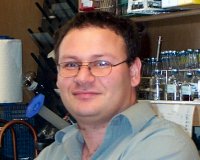Dr. Mostafa Elshahed–a graduate of Faculty of Pharmacy, Cairo University (FOPCU), Class of 1993–will give a seminar about his research to uncover the hidden soil microbiome. Dr. Elshahed was a demonstrator in the Department of Microibology and Immunology at FOPCU who got his PhD from the University of Oklahoma and is currently an assistant professor at Oklahoma State University.
Dr. Elshahed’s work is focused on the discovery of new microbial strain, especially extremophilic bacteria and archaea. It is really an interesting job to isolate microorganisms from the environment; the challenge is that most of these organisms cannot be cultured!
This work raises a lot of interesting questions: How to find new organisms when you cannot culture them? How to know that the microbial DNA you belongs to a new organism? How to analyze complex metagenomic data (with multiple living forms involved in a single habitat)? How to name the new organisms? Can you give them your name (aren’t there bacteria called Pasteurella after Louis Pasteur)? Do you have to study Latin grammar?
Dr. Elshahed has kindly accepted to answer all these questions in an article that he wrote specially to Egybio.net. Read the article here…
